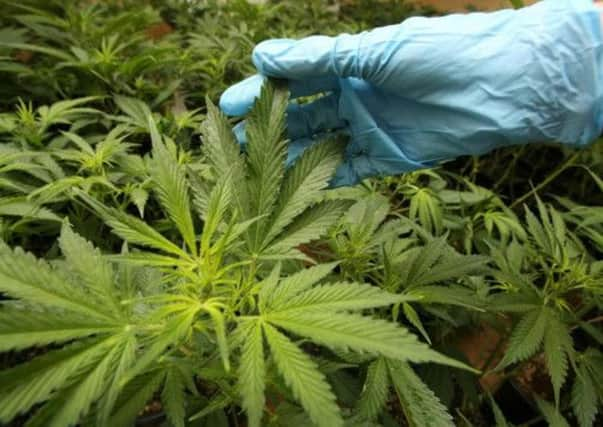'No room for complacency': Drug squads uncovered Scotland's largest cannabis in West Lothian


The discovery of the £750,000 operation has been backed up by the recovery of hundreds of thousands of pounds in criminal profits from the drug trade.
But, as the local police commander Chief Inspector Alun Williams pointed out, there’s no room for complacency.
Advertisement
Hide AdAdvertisement
Hide AdHe recently outlined the work the force has been doing in Scotland to tackle the menace of County Lines drug dealing which is growing.
A learning resource is being rolled out to community groups and local authorities to inform and educate the front line in the war against drug criminals.
Housing providers and social care staff may be the first eyes and ears to witness the signs of County Lines drug crime, Chief Inspector Williams agreed with Board Member deputy council leader Councillor Kirsteen Sullivan.
She said a multi-agency approach was the best way to tackle the spread of large scale criminal activity.
Advertisement
Hide AdAdvertisement
Hide AdA presentation to West Lothian Community Safety Board revealed a sinister vernacular of County Lines . It is one which exploits the youngest and preys on the most vulnerable in society to develop drug dealing networks and control trade.
And, far from gangsters on TV such as Peaky Blinders or The Sopranos, the presentation reveals a squalid existence for those roped into it.
County Lines is a method of dealing drugs that relies on the criminal exploitation of children and vulnerable adults. It involves importing drugs to another area from major cities in England.
Police say the signs of this criminal child exploitation include a change in behaviour, with children becoming angry, anxious or withdrawn; having access to numerous phones; unexplained gifts such as clothes, trainers, electrical items, cash; school truancy or going missing.
Advertisement
Hide AdAdvertisement
Hide AdAnother sign that a child may be involved in County Lines crime is regular travel alone particularly during school hours, late at night with increased use of bus or rail network.
The police presentation also highlighted the term Cuckooing. This is where criminals exploit vulnerable people with mental health, learning difficulties or substance abuse problems.
Basically it’s the act of taking over a person’s home by intimidation or violence. Victims may initially be paid or given drugs to use their home which becomes a safe-house and/or accommodation for the drug courier.
Give-away signs that include unknown persons in the area/address or an increase in reports of violence or antisocial behaviour.
Advertisement
Hide AdAdvertisement
Hide AdOther signs can include increase in activity at the address including many visitors or vehicles; the occupant could appear anxious or distressed or there might be evidence of barricades within the address, including weapons.
National Crime Agency figures reveal just how widespread the activity has become.
Around 2,700 phone numbers have been linked to 1,200 groups and social media increasingly used for recruitment and promotion.
Most originate from London, Liverpool and West Midlands. More than 30 other force areas in England and Wales have at least one group using the County Lines Model. There’s also evidence of exploitation of children and young people and vulnerable adults on the rise.
Advertisement
Hide AdAdvertisement
Hide AdIn Scotland most activity is in the North-East Division, with heroin and crack cocaine being imported from around Merseyside. however police have tackled County Lines activity in other sizeable Scots towns.